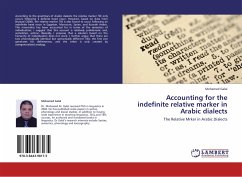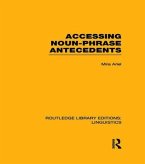According to the grammars of Arabic dialects the relative marker illi only occurs following a definite head noun. However, based on data from Brustad (2000), the relative marker illi is also found to occur following an indefinite head noun in Egyptian, Moroccan, Syrian, and Kuwaiti Arabic. This innovation has been accounted for in terms of the semantics of individuation; I suggest that this account is relatively problematic and, sometimes, ad-hoc. Basically, I propose that a solution based on the hierarchy of individuation does not work. I further argue that there are two phonologically identical but syntactically different illis: the first one generates for definiteness, and the other is only created by overgeneralized analogy.
Bitte wählen Sie Ihr Anliegen aus.
Rechnungen
Retourenschein anfordern
Bestellstatus
Storno








